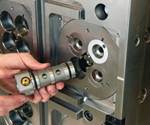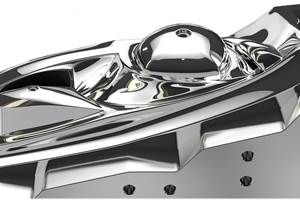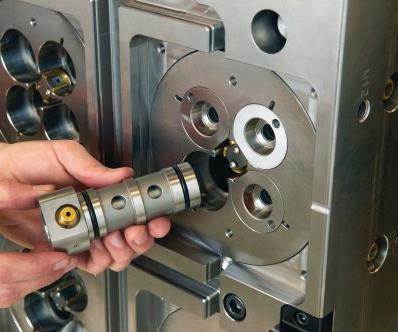In the Trenches: The Trouble with Troubleshooting
A look at the obstacles to effective troubleshooting.
I thought about starting this article with, “The main trouble with troubleshooting is …,” but there are so many troubles that naming just one would be difficult.
The problem is supply and demand. We have more troubles than shooters, and troubleshooting is a soft skill for which we have a lack of available training. The problems are many, including that most people (especially technical people) think they are troubleshooters, that many technicians equate “parts swapping” with troubleshooting, and that most are confused about what troubleshooting actually is. Most of us know what the end result of effective troubleshooting is: problem solved. However, the process that happens between realizing there is a problem and concluding that “everything’s back to normal” is a mysterious black art.
So, my second idea was to begin this article with a humorous anecdote: One Sunday morning I went to the barn to get some meat out of the chest freezer and discovered that all the meat was thawing. In a panic, we cleared out all the unnecessary items in the freezer, called some close friends and the in-laws, and found new homes for all of our frozen meat. A few days later, after being told the scrap yard would not take the freezer with freon in the system, I clamped off the lines and cut out its condenser unit. The following Saturday, while loading the freezer onto a trailer to take it to the scrap yard, there it was! The power cord was literally “hanging by a thread.”
There are two problems with my troubleshooting: 1) I think I’m a troubleshooter when the evidence clearly paints a different picture, and 2) I jump to conclusions without going through the process of troubleshooting.
The Process of Troubleshooting
Root cause analysis is essential to the troubleshooting process. I recently attended a two-day root cause analysis seminar during which the instructor emphasized the need to properly identify the problem when troubleshooting. If the problem is not fully, completely and accurately defined, the solution (or attempts at one) will quite possibly be off the mark.
Given that most (if not all) on-the-job troubleshooting is done under the pressure of time constraints and watchful eyes, it’s not surprising that our natural tendencies are fostered by the environments in which we work—to make assumptions and jump to conclusions. Knowing the pitfalls of troubleshooting can help us steel ourselves against those tendencies that lead to false starts and ineffective conclusions.
To further complicate matters, troubleshooting is a two-faceted discipline. It is equally a thought process and a technical/knowledge-based skill process. The thought process is simple and can be structured in a linear, step-by-step fashion: identify the problem, postulate probable causes, eliminate options, implement repair and verify results. The technical skill process is the messy part and the reason why you can’t buy a “one size fits all” troubleshooting certificate to hand out to all technicians regardless of their particular discipline. This technical skill facet informs the structure of the thought process. Technical skills fill in the blanks, gather information, direct hypotheses (educated guesses), test postulates and implement repairs.
The best start is to instruct in the basic thought process, implement its use (laminate the steps on a small card that can be attached to the back of an I.D. badge), and insist on its adoption as a standard by challenging technicians to account for how they went through the process. On top of all that, pile on as much technical training as you can provide (see sidebar for a suggested reading list to get you started).
Troubleshooting Tools of the Trade
Troubleshooting is not assuming you have the answer before you know what the problem is. It is not “parts swapping” until you happen upon the one that fixes the issue. It is not conjuring up some “work around” that allows the problem to be circumvented. Troubleshooting is a skill that can only be developed with time, effort and commitment.
Asking questions is the single most important tool in your troubleshooting toolbox, as practiced in the “Five Whys and Eight Disciplines Problem Solving” (8D) question-asking techniques for identifying and correcting problems.
Another method is the “Is/Is Not” device. For example, the robot will not demold the part. The part is/is not stuck in the mold? If the part is falling out of the mold, it is by definition not stuck in the mold, and you will just waste time polishing pins or lifters. The part is/is not falling before the end of arm (EOA) tooling gets in place? The part is/is not falling off the EOA? The vacuum circuits are/are not energized? At each point, identifying clearly what is the case and what is not the case helps point the investigation in a more productive direction.
Summary
In manufacturing—whether it’s processing, press maintenance or mold maintenance—troubleshooting is a highly prized skill, and, as with any skill, it takes time and experience to develop it. So be intentional about it. Good luck, and may your troubles be few and your shooting be accurate.
Related Content
Breaking Down 3D Scanning in Moldmaking
Identifying 3D scanning requirements and implementing the appropriate technology.
Read MoreHow to Achieve the Best Mold Finish
A look at factors that impact the polishability of tool steels and recommendations for obtaining a high-gloss finish.
Read MoreThink Safety: Eliminate Hazards Throughout the Shop
The tooling community is taking advantage of new products for safer mold shops and molding facilities.
Read MoreFour Micro Tooling Considerations
Issues involving gating, ejection, mold splits and direction of pull are of special concern when it comes to micro tooling.
Read MoreRead Next
In the Trenches: Mold Repair
In this multi-part series of articles, contributer James Bourne, a tool repair supervisor and freelance writer, shares his own personal struggles in the business, as well as lessons learned and tricks of the trade garnered along the way.
Read MoreReasons to Use Fiber Lasers for Mold Cleaning
Fiber lasers offer a simplicity, speed, control and portability, minimizing mold cleaning risks.
Read MoreAre You a Moldmaker Considering 3D Printing? Consider the 3D Printing Workshop at NPE2024
Presentations will cover 3D printing for mold tooling, material innovation, product development, bridge production and full-scale, high-volume additive manufacturing.
Read More




















